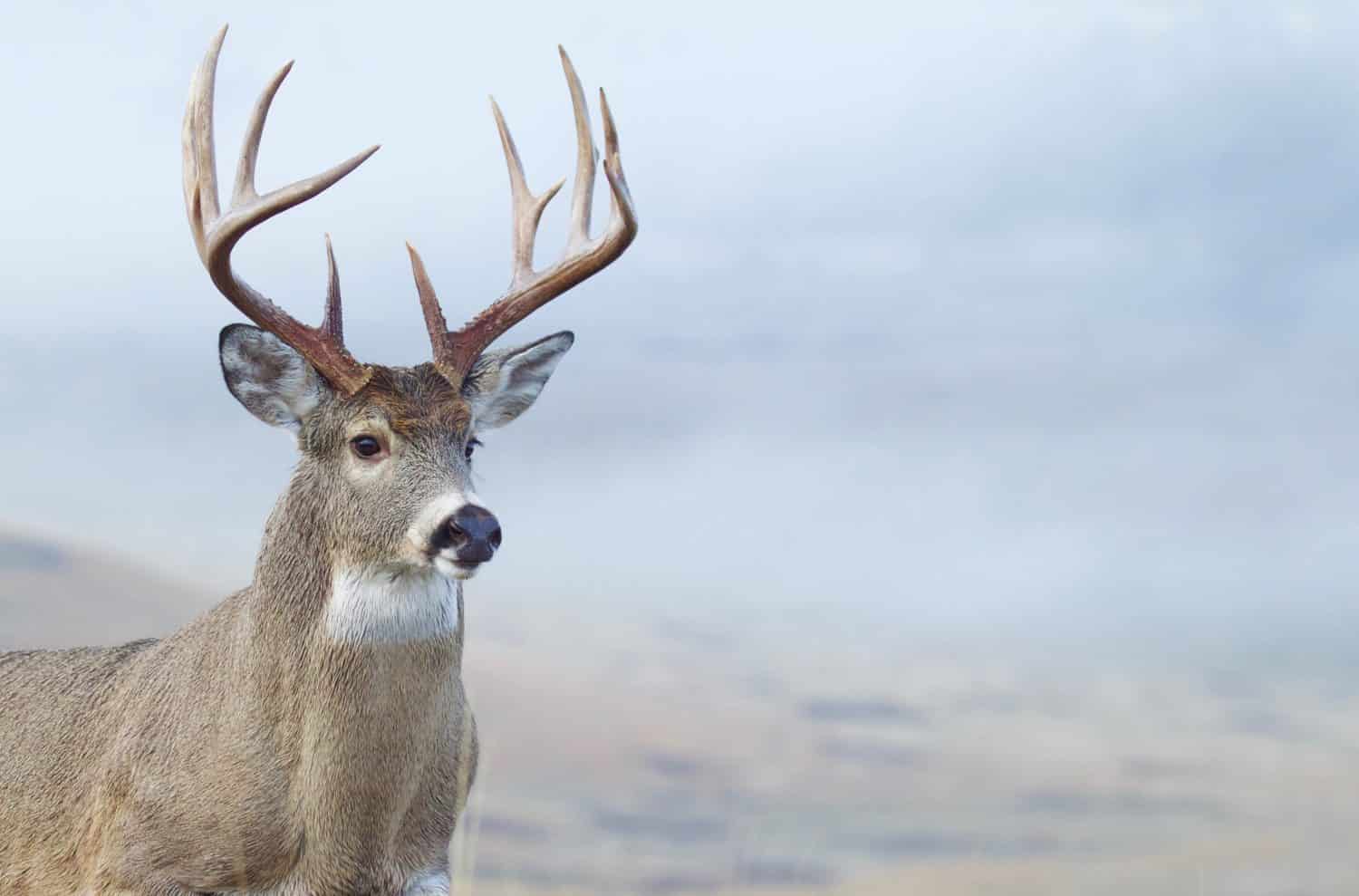When you’re out in the woods (or wandering the suburbs at dusk), you may hear various noises you can’t identify. Is it people making the noise? Dogs? Wildlife? It can often be difficult to determine who the culprit is.
While many people think of white-tailed deer as being quiet animals, they are actually responsible for plenty of noise. Whether you’re trying to identify a snort coming from your yard or a grunt below a hunting blind, it’s handy to know what a deer sounds like. But they don’t just make one sound! Here are eight noises white-tailed deer make (and what each one means).
1. Grunts
Grunting is one of the most common noises that deer make. Used for communication between deer, it is a low, guttural sound. A common greeting grunt makes an “urp” noise. But not all grunts are the same: several variations can help identify who is making the noise.
Buck Grunts
The grunt of a buck is a deep, guttural sound that the animals use to announce their dominance. These short grunts tell other deer that a buck is claiming his territory (and the does within). When bucks are chasing does while in rut, they make “trailing grunts,” or a series of short grunts that sound like an excited “urp-urp-urp.”
Bucks also make what is known as a tending grunt. This grunt is very deep but soft, and made of long, slow sounds. Bucks make this noise when they are pursuing a doe during rut and want her to wait for them. The tending grunt is more drawn out than trailing grunts, sounding like a long “urrrrrrrp” sound. Bucks will also use this noise to voice frustration and assert their dominance over other bucks.
Doe Grunts
Much like in people, female deer’s “voices” are higher than the males. Females (called does) have a higher pitched, more nasal grunt than the males (known as bucks). For the most part, does don’t use grunts to show dominance, but rather to talk to other members of the herd or get the attention of their fawns.
2. Blows
If you’ve ever heard a horse snort when it is startled or upset, you have a beginning idea of what deer blows sound like. A blow is an explosive high-pitched exhale that can be used to warn other deer of potential threats. Blows are commonly made by mature does who are attuned to danger. These noises are often accompanied by stomping feet and flaring nostrils.
3. Sniffs

White-tailed deer will sniff the air to identify potential threats.
©iStock.com/EEI_Tony
Deer will also sniff around for food or to detect the scent of threats. Sniffing is not a loud noise but sounds like the sniffing of a cat or dog, albeit louder. Deer will raise their heads to sniff the air if they need to get a better whiff of potential danger. This head raising also alerts the rest of the herd that something may be amiss. Deer have a great sense of smell, so sniffing and smelling can tell them a lot about their surroundings.
4. Snorts
The deer snort, also known as the snort wheeze, is an intimidation sound used by bucks. This noise sounds a bit like someone trying to clear mucus out of a congested nose. An intimidation noise, this snort is followed by a long wheeze like someone letting air out of a balloon.
5. Bleats
A doe’s bleats can mean many different things depending on the variation. Bleating is a high-pitched, whining noise that does use to communicate with one another. They will also bleat to call their fawns. These bleats sound a bit like a goat and are generally not very loud. Does will also bleat if they are in heat (estrous) and are trying to attract a buck.
6. Fawn Bleats
A fawn bleat is a distress call to mom. They make this high-pitched whine when they want mom’s attention or are hungry. It sounds similar to the doe’s bleat, but more persistent and insisting. Fawns that are content will be silent, so a fawn making noise needs something from its mother. If you find a fawn wandering on its own bleating without a mother in sight, it may need assistance. Contact a local wildlife rehabilitator for advice on what to do. Does do leave young fawns alone during the day, only returning at dusk and dawn to feed them, so if you find a quiet fawn, it is well cared for and doing well, and requires no intervention.
7. Breeding Bellows
Also known as a buck roar, buck growl, or rage grunt, the breeding bellows is a low, guttural call that bucks make when a doe in estrous is close by but isn’t engaging with them. Essentially, the buck is expressing its frustration that the doe hasn’t allowed them to breed with her. This noise is deeper than other buck calls, and often doesn’t sound like a deer at all, but more like a cow.
8. Antler Sounds

Bucks rub their antlers on trees and other surfaces to scent mark their territory.
©iStock.com/steverts
Deer don’t just make noise with their mouths: bucks will also get noisy with their antlers. During the breeding season, bucks rub their antlers against trees, fence posts, or other objects to scent mark to attract females and establish dominance. This can result in loud scraping noises, which are usually accompanied by other buck noises such as breeding bellows, grunts, or pawing at the ground. Antler sounds may attract other bucks who want to establish dominance or scare off ones that aren’t looking for a contest.
Thank you for reading! Have some feedback for us? Contact the AZ Animals editorial team.








